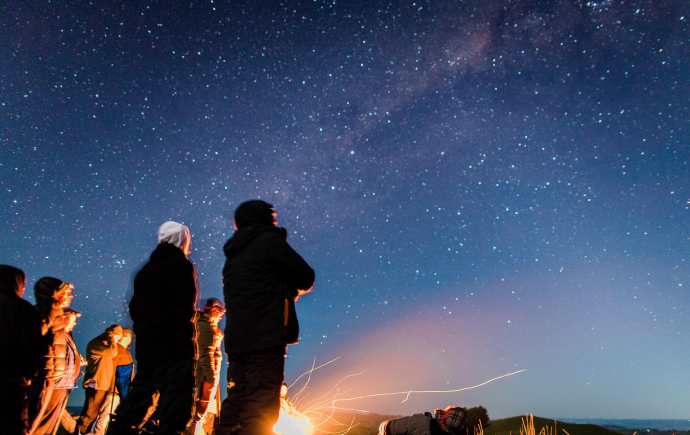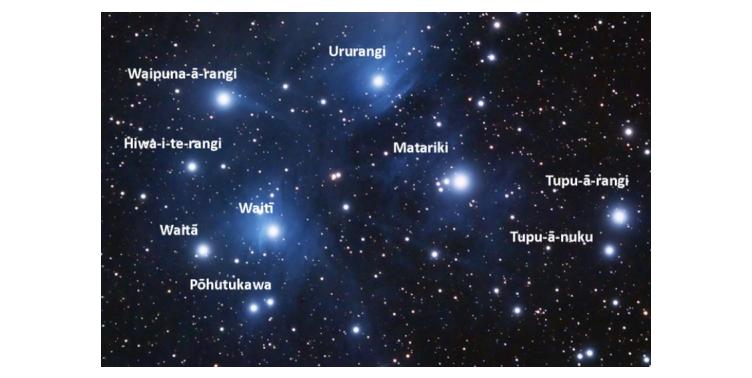Matariki signifies a time to gather, reflect, remember those who are no longer with us, celebrate the present, and plan for the future.
The rising of Matariki signals the beginning of the Māori New Year. Māori have long observed the brightness and visibility of the stars to predict how the year ahead will be.
This is the second year Matariki has been celebrated with a public holiday and there are events all week, many of them perfect for school holidays activities. Eventfinda has a strong list or just surf the web for your local area.

To find Matariki, look to the left of Tautoru (Orion or often called the pot), trace a line northwards from the three stars of Tautoru to a triangular-shaped cluster of stars and you will have found Hyades, or Te Kokotā.
Look towards the left again, and just off the shoulder of Te Kokotā is Matariki.
The best time to view the Matariki cluster is early morning, just before dawn.
Although there are about a thousand whetū (stars) in Matariki, nine stars are visible to the unaided eye. In te ao Māori, each of the whetū is associated with an aspect of wellbeing and the environment:
- Matariki (Alcyone) – people’s health and wellbeing
- Tupu-ā-rangi (Atlas) – things that grow up in trees, including fruits, berries and birds
- Waipuna-ā-rangi (Electra) – rainfall
- Waitī (Maia) – freshwater bodies and foods from these waters
- Ururangi (Merope) – the winds
- Tupu-ā-nuku (Pleione) – food that is gathered/harvested from the soil
- Waitā (Taygeta) – the ocean and foods that come from it
- Pōhutukawa (Sterope) – those who have passed on
- Hiwa-i-te-rangi (Calaeno) – attainment of goals.
Most cultures have similar celebrations or approaches around connecting with our wider environment, and back to our ancestral path.
Matariki is is visible in many locations around the world at different times.
Some know it as The Seven Sisters - the Greek name is the Pleiades, in Japan it's called Subaru (to come together) and in China it is Mao, the Hairy Head of the White Tiger of the West.
Closer to home in the pacific, in Tahiti the cluster is known as Matari’i, in Samoa, it is called Matali'i, in Tokelau, Niue, and Tuvalu it is Mataliki, and in Hawai'i, it is Makahiki.
Other Pacific Islands, like the Cook Islands, New Caledonia and Marquesas also know it as Matariki.
Science snippet....the stars we see in Matariki are relatively young - born together in a nebula at about the same time. They are much larger than our Sun & Matariki is one of the nearest star clusters to Earth – it’s only 444.2 light years away!
